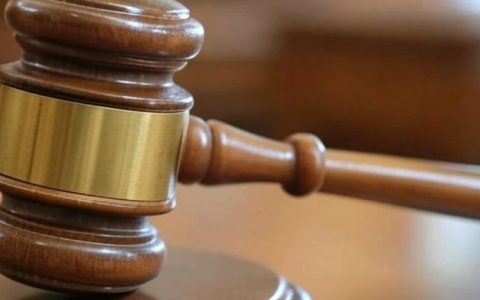
America is about to be very different. All thanks to a handful of SCOTUS rulings.
As the U.S. Supreme Court’s handing down rulings that absolutely no one saw coming.
Over the past few years, the U.S. Supreme Court has been pretty busy. The justices have ruled on some major cases that have changed American government and society for decades to come. They’re only getting started, though. To finish out the docket in 2024 are some absolutely massive cases that, with no overstatement needed, could decide America’s future.
Four cases in particular are expected to be ruled on by the end of the week that cover a wide-range of topics from government state authority to the First Amendment and the rights of states. Whatever happens in these cases and how the justices rule is what everyone is waiting for. Let’s take a look at the four.
1. Trump Immunity Case
First, the one everyone is actually expecting is the ruling on Donald Trump’s immunity claim. Trump is attempting to dismiss his federal election interference case by arguing that he has presidential immunity for official actions taken while in office. Although lower courts have rejected his argument, the Supreme Court will soon rule on his appeal.
Trump’s appeal has delayed the case for several months, prompting the district court judge to cancel the originally scheduled March 4 trial date, making it highly unlikely that a trial will occur before the 2024 election.
2. Biden Administration First Amendment Violations
Extensive government initiatives to push social media companies to censor online speech were scrutinized by the Supreme Court during oral arguments in March. The case, Murthy v. Missouri, questions whether the actions of the Biden administration infringe upon the First Amendment.
The lawsuit was filed by Republican attorneys general from Missouri and Louisiana, along with five individuals whose speech was censored. Evidence gathered through their legal efforts revealed that the government frequently requested companies to suppress “misinformation” on issues like COVID-19 and the election.
In July 2023, a federal judge issued an injunction, stating the case “arguably involves the most massive attack against free speech in United States’ history.” The Fifth Circuit upheld a narrower version of this injunction, preventing the White House, Surgeon General, CDC, and FBI from pressuring or significantly encouraging companies to censor speech.
3. Government Authoritarianism and Regulations
The Supreme Court’s 1984 Chevron ruling instructs courts to defer to reasonable agency interpretations of laws when a statute’s language is unclear. Critics argue that Chevron deference grants the government an unfair advantage in litigation against citizens, enabling agencies to impose their interpretations of statutes in court without substantial opposition, affecting issues from Second Amendment rights to religious freedom.
The Supreme Court may overturn Chevron deference in two cases brought by fishermen, Loper Bright Enterprises v. Raimondo and Relentless, Inc. v. Department of Commerce. These cases involve fishing companies suing the National Oceanic and Atmospheric Administration instituted a rule requiring them to pay nearly a thousand dollars a day to cover the salaries of employees the companies are forced to employ on regulations alone, a rule lower courts upheld based on Chevron.
4. Abortion in Idaho
The Supreme Court is set to rule on an alleged conflict between a federal statute, which the Biden administration claims mandates abortions, and an Idaho state law that bans abortions except to save the mother’s life or in cases of rape or incest.
Following the Supreme Court’s landmark decision to reverse Roe v. Wade in 2022, the Biden Department of Justice (DOJ) sued Idaho over its Defense of Life Act. The DOJ contends that the pro-life law obstructs emergency room doctors from performing abortions deemed necessary under the federal Emergency Medical Treatment and Labor Act’s (EMTALA) definition of emergency “stabilizing care.”
The Supreme Court has permitted Idaho’s ban to remain in effect while it deliberates on the case.
All of these cases are expected to reach their conclusions by the end of this week. The earliest any of these cases will having a ruling handed down is Wednesday, June 26th. It is largely expected that the U.S. Supreme Court will need to set up barricades outside of the High Court, as they have had to in the past after major decisions.
The DC Daily Journal will update you as soon as there are rulings handed down in these cases.





